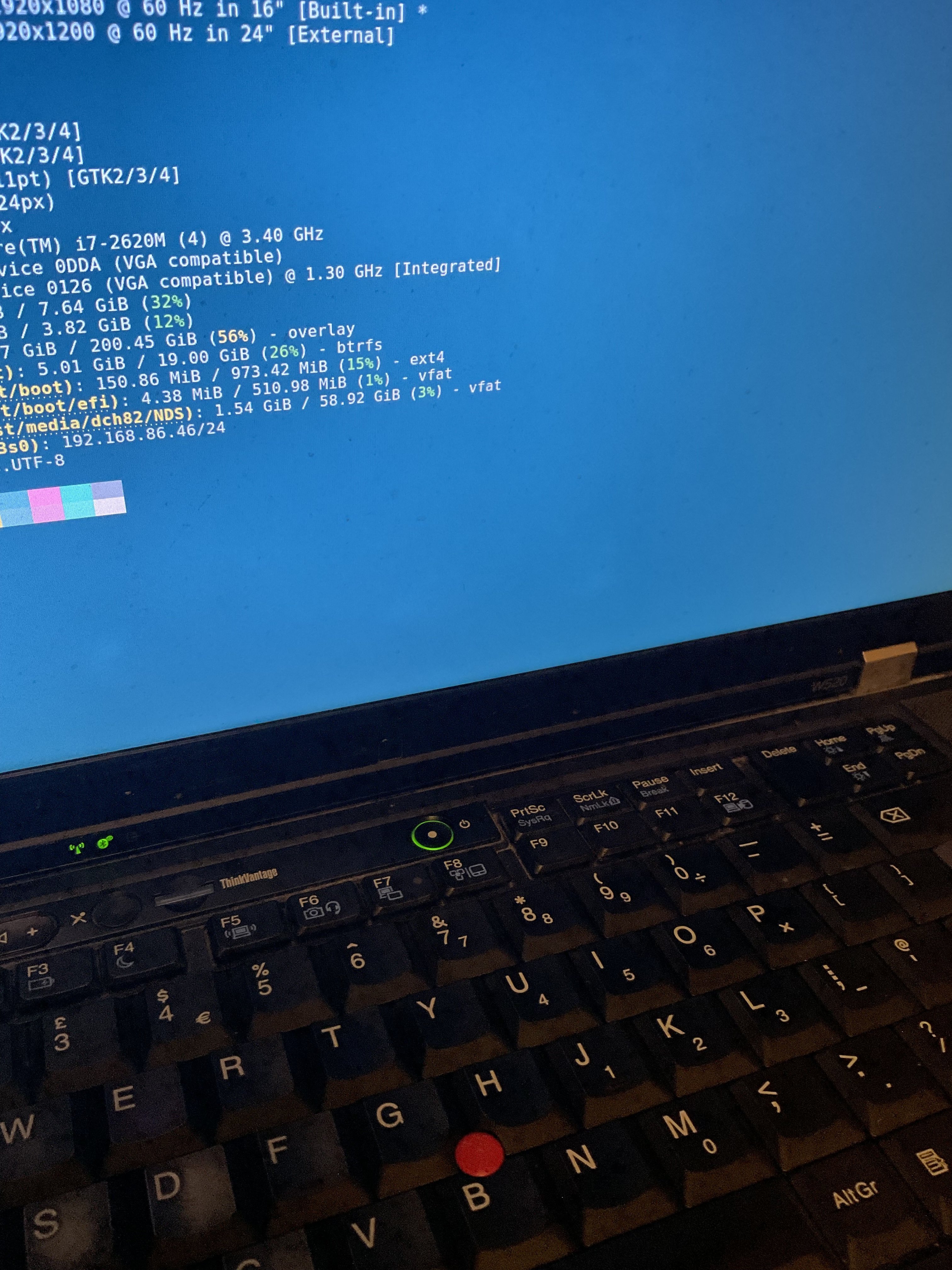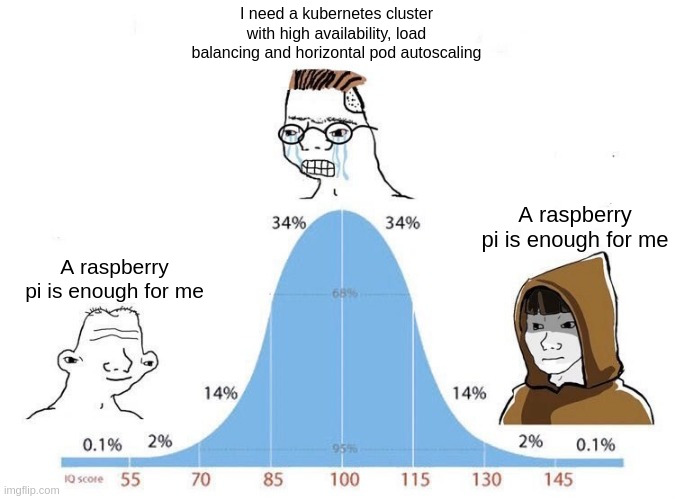rPi with k3s installed
linuxmemes
Hint: :q!
Sister communities:
Community rules (click to expand)
1. Follow the site-wide rules
- Instance-wide TOS: https://legal.lemmy.world/tos/
- Lemmy code of conduct: https://join-lemmy.org/docs/code_of_conduct.html
2. Be civil
- Understand the difference between a joke and an insult.
- Do not harrass or attack users for any reason. This includes using blanket terms, like "every user of thing".
- Don't get baited into back-and-forth insults. We are not animals.
- Leave remarks of "peasantry" to the PCMR community. If you dislike an OS/service/application, attack the thing you dislike, not the individuals who use it. Some people may not have a choice.
- Bigotry will not be tolerated.
3. Post Linux-related content
- Including Unix and BSD.
- Non-Linux content is acceptable as long as it makes a reference to Linux. For example, the poorly made mockery of
sudoin Windows. - No porn, no politics, no trolling or ragebaiting.
4. No recent reposts
- Everybody uses Arch btw, can't quit Vim, <loves/tolerates/hates> systemd, and wants to interject for a moment. You can stop now.
5. 🇬🇧 Language/язык/Sprache
- This is primarily an English-speaking community. 🇬🇧🇦🇺🇺🇸
- Comments written in other languages are allowed.
- The substance of a post should be comprehensible for people who only speak English.
- Titles and post bodies written in other languages will be allowed, but only as long as the above rule is observed.
6. (NEW!) Regarding public figures
We all have our opinions, and certain public figures can be divisive. Keep in mind that this is a community for memes and light-hearted fun, not for airing grievances or leveling accusations. - Keep discussions polite and free of disparagement.
- We are never in possession of all of the facts. Defamatory comments will not be tolerated.
- Discussions that get too heated will be locked and offending comments removed.
Please report posts and comments that break these rules!
Important: never execute code or follow advice that you don't understand or can't verify, especially here. The word of the day is credibility. This is a meme community -- even the most helpful comments might just be shitposts that can damage your system. Be aware, be smart, don't remove France.

Same, in fact you can also went down in RPi models. Basically the more you know, the less you need, e.g. going from Plex to Kodi to minidlna...
Absolutely the best way to learn though. The number of places I've walked into that had no clue about containers or even a vpc and thought Google drive was an API is too damn high.
I have actually had to write something that used the Google drive API for a friend's company once and it was... Unpleasant. Counterintuitive. Woefully inconsistent. My solution worked but it sucked and I am a bit ashamed of it
I love my little k3s box and having all my config in git
As a developer and not a sysadmin, I refuse to learn anything more than docker. It's good enough for me 😤
Edit: on a more serious note, proxmox with docker containers has been more than enough for me
I've been enjoying Jeff Geerling's ongoing experiments with his 10" Raspberry Pi mini rack.
It doesn't work for me since all of my network equipment is 19" and there's no point in having two racks but having a 10" standard is still a great idea!
Wait, you can host a website on a raspberry pi !? But is it really cheaper than shared hosting, for instance? And even then, quality-wise, it cannot be that good, can it?
You can host a website on a lot less, even. But it entirely depends on what you're hosting and the load. Basically anything can host a bunch of static pages, so if your site is just that, basically anything will do. You could probably even do a WordPress site with the right caching plugins and serve a reasonable amount of traffic. The first limit you'll hit realistically is your uplink, not your webserver CPU.
You can definitely run a low traffic website with a Pi. You can run Minecraft Servers and such on Pis. Especially on Pi4s.
Random mixed parts -> 4u unraid server with switch -> random fedora Optiplex that never fails unlike 4u server
Why not rasberry pi with kubernetes?
three raspberries pi running k3s is good enough for me
